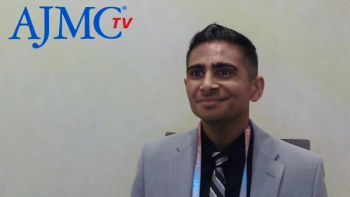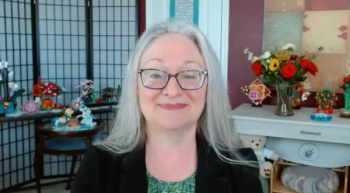
Influencing Untreated Individuals Through Their Social Networks
Is it possible to leverage social networks to influence response to treatment among an untreated population? During the second plenary at the ISPOR 22nd Annual International Meeting, held May 20-24 in Boston, Massachusetts, Nicholas Christakis, MD, PhD, of Yale University, described his research into social network interventions.
Is it possible to leverage social networks to influence response to treatment among an untreated population? During the second plenary at the ISPOR 22nd Annual International Meeting, held May 20-24 in Boston, Massachusetts, Nicholas Christakis, MD, PhD, of Yale University, described his research into social network interventions.
Christakis isn’t talking about online social networks, like Facebook or Twitter. His research delves into real social networks, the kinds that first formed tens of thousands of years ago and connect people to one another.
“If we can understand how social networks function … it gives us new ways to intervene in the world to make it better,” Christakis said. “To improve our health, our wealth, our civic life, and diverse sorts of other outcomes.”
Taking social networks into account means shifting the focus from the target of an intervention to everyone around those being given the intervention.
His research began 10 years ago with a look at obesity among social networks.
“Could we find evidence that obesity was spreading from person to person?” he wondered. “How much clustering is there? Is there more clustering than simply due to chance?”
Christakis and his fellow researchers plotted social networks so they could see who had obesity and how they were connected to other people in the network. They were able to determine that the clustering was due to more than chance.
For instance, a person had a 45% chance of being obese if he or she had a friend at 1 degree of separation who was obese. The chance decreased as the degrees of separation increased and at 3 degrees of separation there was no correlation.
They considered that there were 3 potential causes for this clustering:
- Induction—when one person gains weight, the other person gains weight, which results in it spreading through the network
- Homophily—the idea that birds of a feather flock together or that people become friends because they have similarities, such as body size
- Context—people share exposure to a contextual factor, such as a local fast food place that makes them gain weight together
They were persuaded there was evidence of a spread of norms, which indicated that induction was at play.
“As you gain weight, it changes my ideas of what an acceptable body weight is, and then I pass it along,” Christakis explained.
Social network structure is important in how something spreads through it and there are 3 broad ways to intervene and manipulate those connections:
- Changing the structure and how people are wired together
- Changing the flows and strategically targeting of who should receive the intervention
- Changing the location of people in a network to maximize social welfare
For example, in a study of how something spread through a network with random connections and a network with the usual neighborhood connection. In both networks, each person was connected to 6 friends, but the structure of how those connections fit into the overall network differed.
In a random network, a simple germ would spread faster and more completely because it would take longer to get through the typical neighborhood network. However, complex contagions spread better through neighborhood networks. Something like a smoking cessation intervention spreads better through a neighborhood because people are directly connected to people near them who have quit smoking.
The ideas of connection and contagion in social networks are also relevant to physician networks. Claims data have a structure and researchers can map a network of doctors who have patients in common, which reveals the diffusion of innovation.
“Because your practice style, how many tests you order, what drugs you prescribe, should affect me if I share lots of patients with you,” Christakis said.
In one network they looked at doctors prescribing Januvia and found that these prescriptions went to 3 degrees of separation. This provides opportunities to foster or suppress behaviors, such as prescribing and test ordering.
In the network map, Christakis identified one doctor surrounded by 3 heavy Januvia prescribers, which the doctor was resisting prescribing the drug. As a result, an entire section of the network was prescribing Januvia, because the influence that one doctor had on a section of the network. Changing that one doctor’s behavior could further spread the prescribing of Januvia among the overall network, Christakis determined.
So what does it mean to intervene in a social network? These interventions provide a way to manipulate social capital, which is the network that enables a society to function effectively.
“Social capital in organizations, in companies, in communities, and in fact, in our whole society is a change in the relations among persons, a change that renders the group more productive and capable of doing things it was not previously capable to do,” Christakis said. “And that’s the deepest account I can give you of what social networks mean for our lives, why it is that we make social networks, and how we can use them to make the world better.”
Newsletter
Stay ahead of policy, cost, and value—subscribe to AJMC for expert insights at the intersection of clinical care and health economics.















































